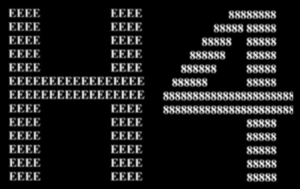The global attention of the right hemisphere precedes the narrow attention of the left hemisphere🧠
If novelty is handled by the right hemisphere, and is transferred to the left hemisphere as it becomes familiar, this suggests a temporal hierarchy of attention, with our awareness of any object of experience beginning in the right hemisphere, which grounds experience, before it gets to be further processed in the left hemisphere. This coexists with and is confirmed by a hierarchy of attention at any one moment in time, which also establishes the right hemisphere, not the left, as predominant for attention. Global attention, courtesy of the right hemisphere (The right hemisphere has broad, global, and flexible attention, while the left has narrow attention), comes first, not just in time, but takes precedence in our sense of what it is we are attending to; it therefore guides the left hemisphere’s local attention, rather than the other way around. As an illustration, we would normally see the following images as an H (composed of Es) and a 4 (composed of 8s):

The exception to this is in schizophrenia, where the right hemisphere dependent ability to see the whole at once is lost; then the figure becomes just a mass of Es and 8s. One of the crucial differences in schizophrenia—and in schizotypy—lies in the mode of attention, whereby the whole is built up from the parts. However, the attentional hierarchy can also be inverted in certain circumstances in normal individuals. When there is a high probability that what we are looking for lies at the local level, our window of attention narrows, in order to optimize performance at this level, thus reversing the natural tendency to favor the global aspect.
Essentially the left hemisphere’s narrow attention (The right hemisphere has broad, global, and flexible attention, while the left has narrow attention), which it believes it directs towards whatever it may be, has in reality already been seized by the right. It is thus the right hemisphere that has dominance for exploratory attentional movements, while the left hemisphere assists in focussed grasping of what has already been prioritized. It is the right hemisphere that controls where that attention is to be oriented.
We may think that we build up a picture of something by a process of serial scanning—putting the bits together—because this is the way our conscious, verbal, left hemisphere, when asked to work out how it is done after the fact, accounts for it. But in reality we see things first whole: serial attentional processing is not needed. In other words, we do not have to orientate our attention to each feature of an object to understand the overall object; the features are all present without the need to combine the products of focal attention.
References
- Mcgilchrist, Iain. (2010). The Master and His Emissary Chapter 2 What Do the Hemispheres Do (91). London, UK: Yale University Press.
Metadata
Type:🔴 Tags: Biology / Neuroscience / Neuropsychology Status:☀️